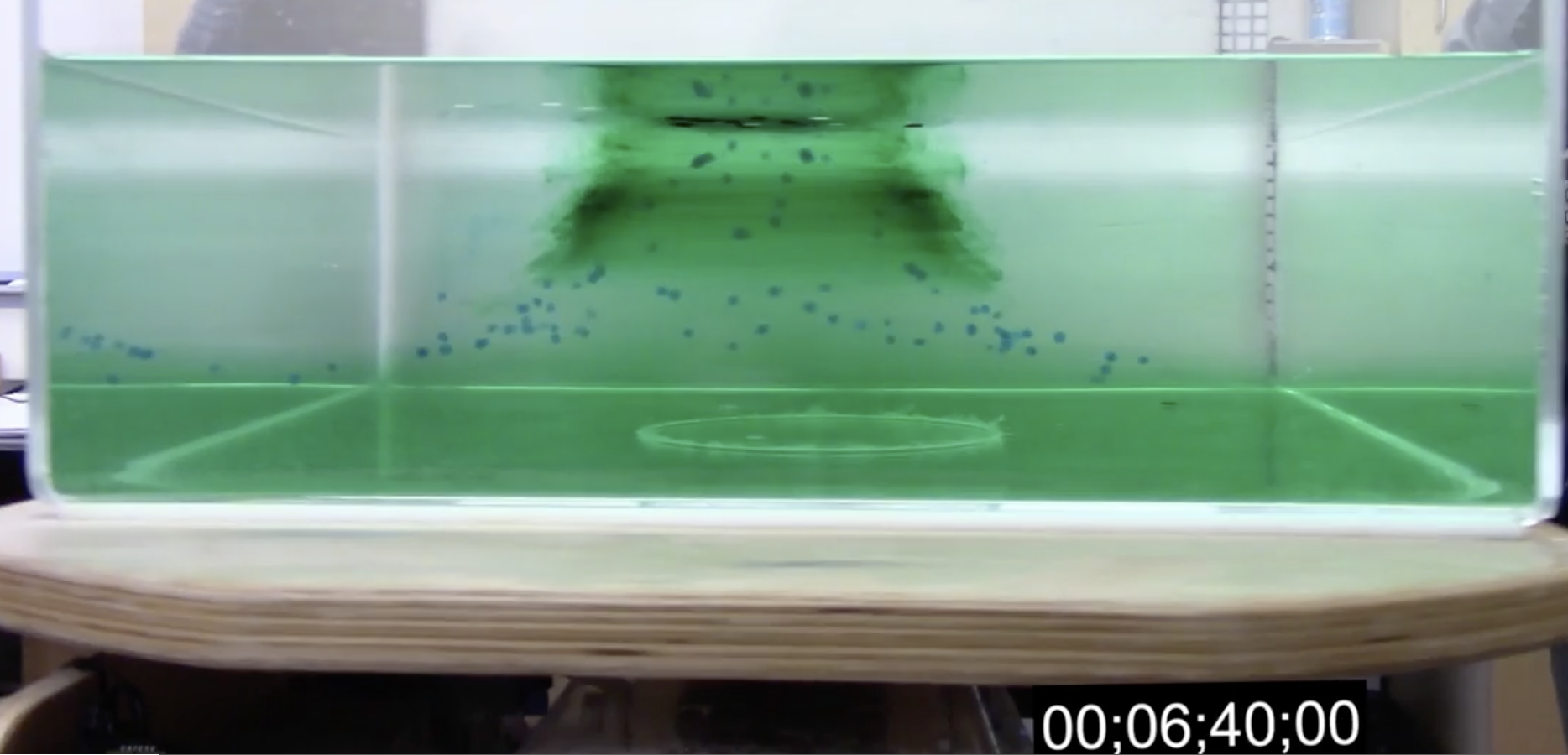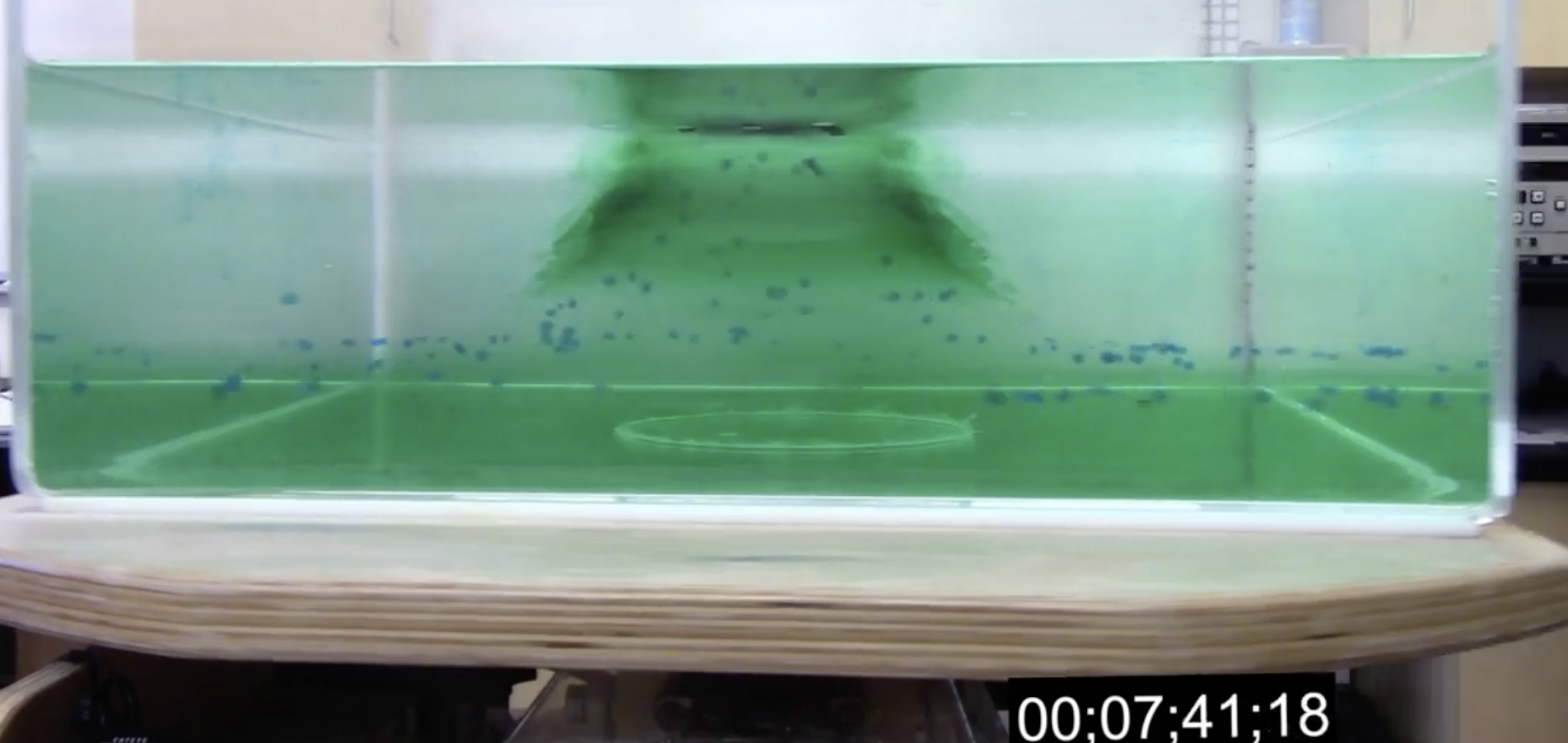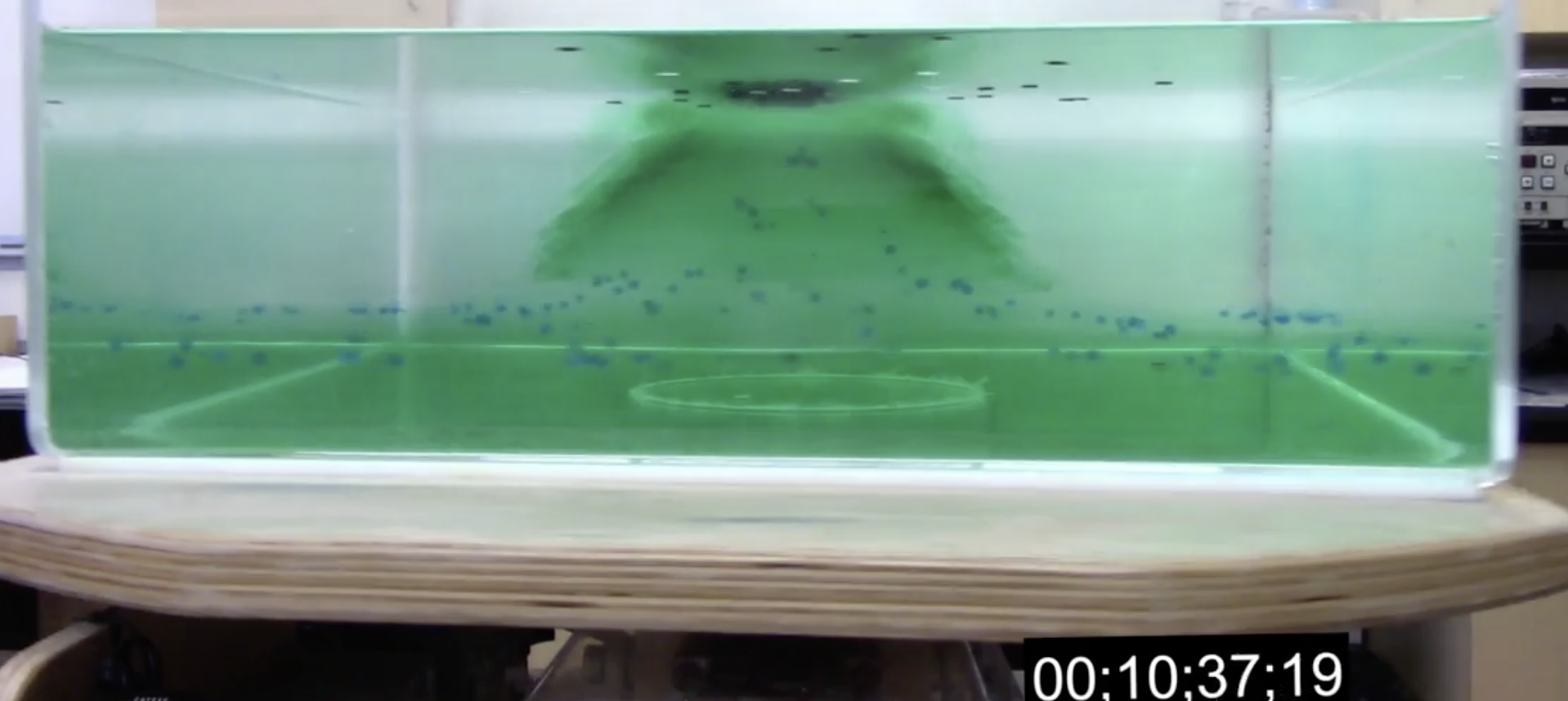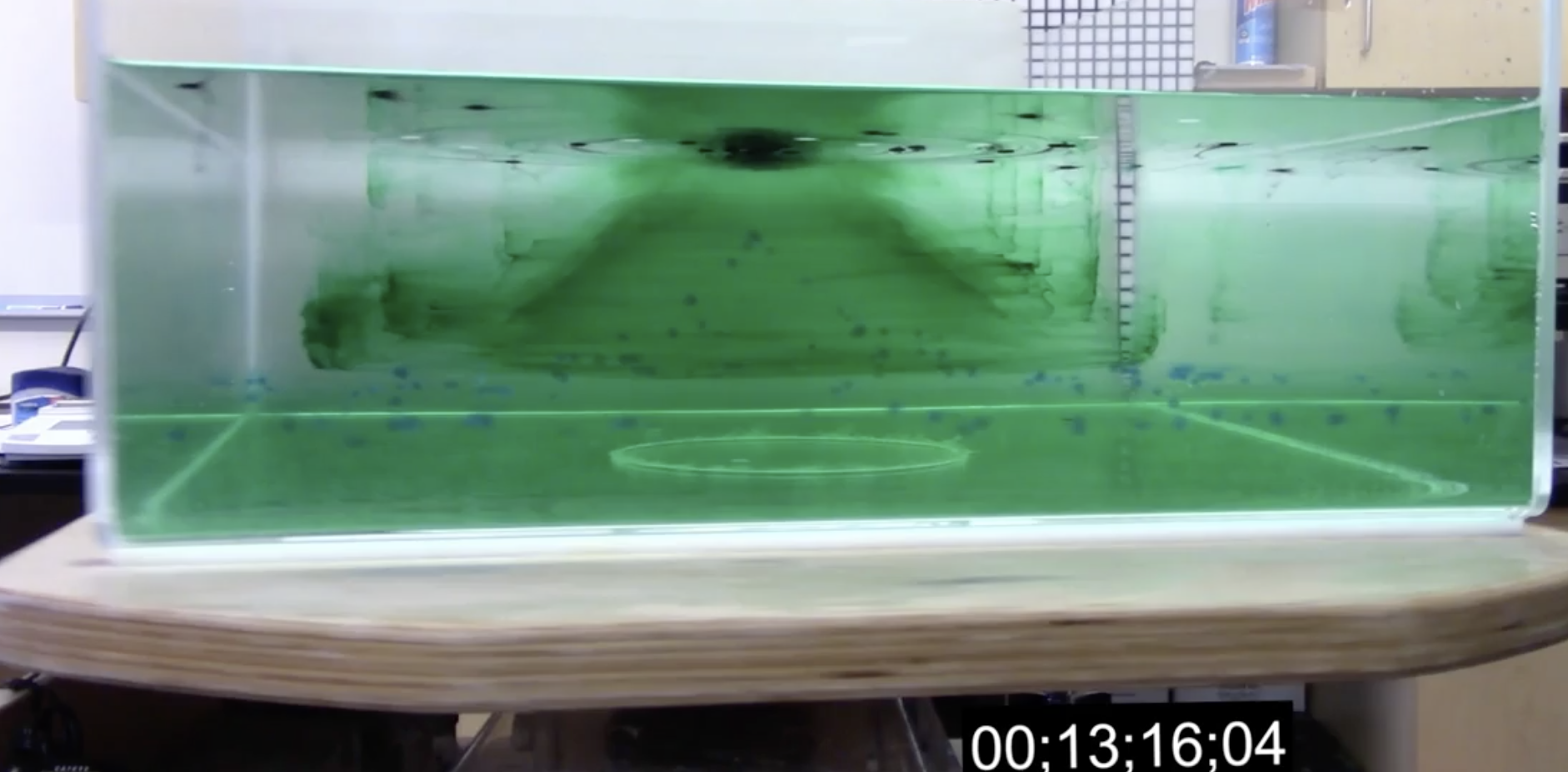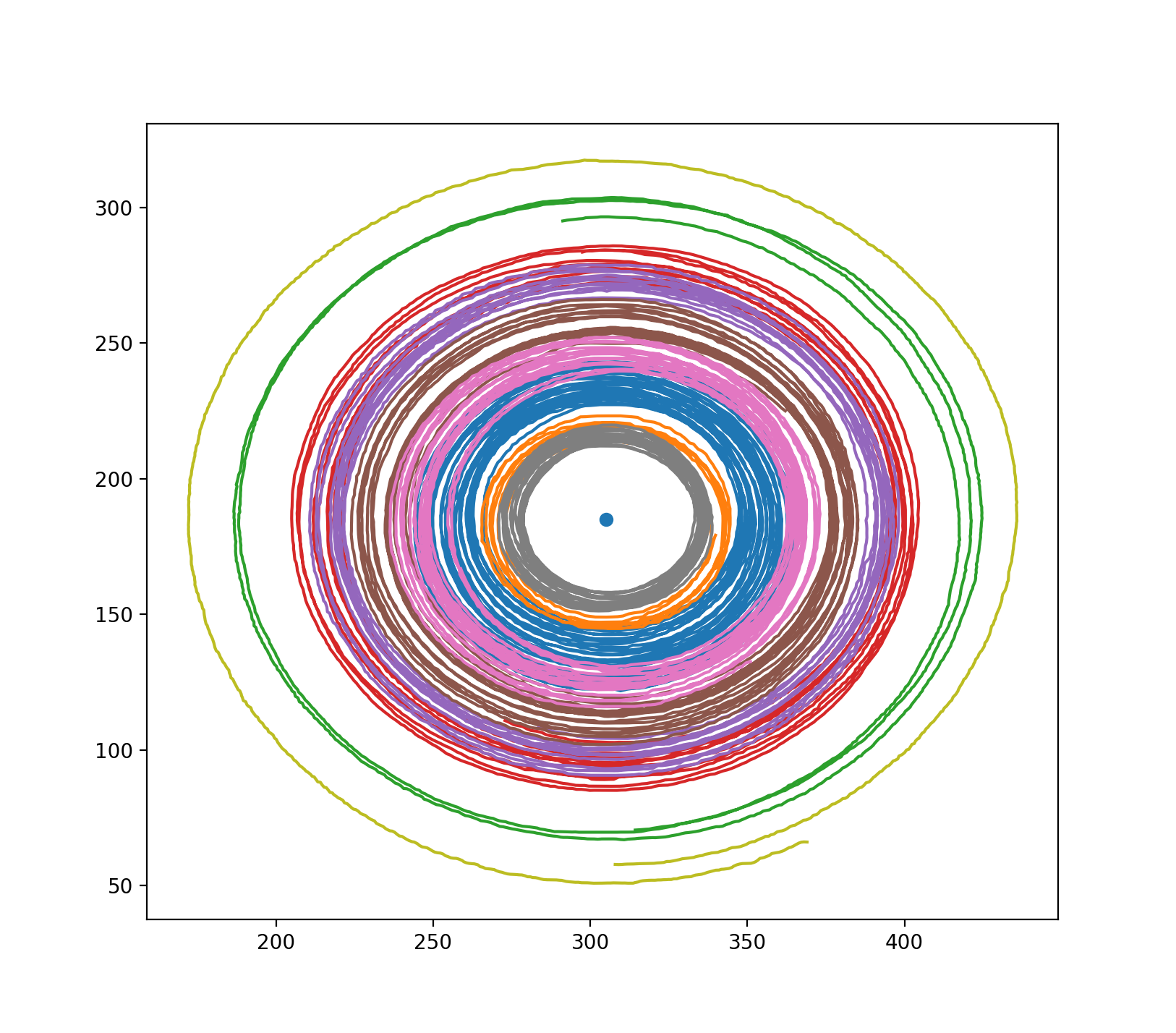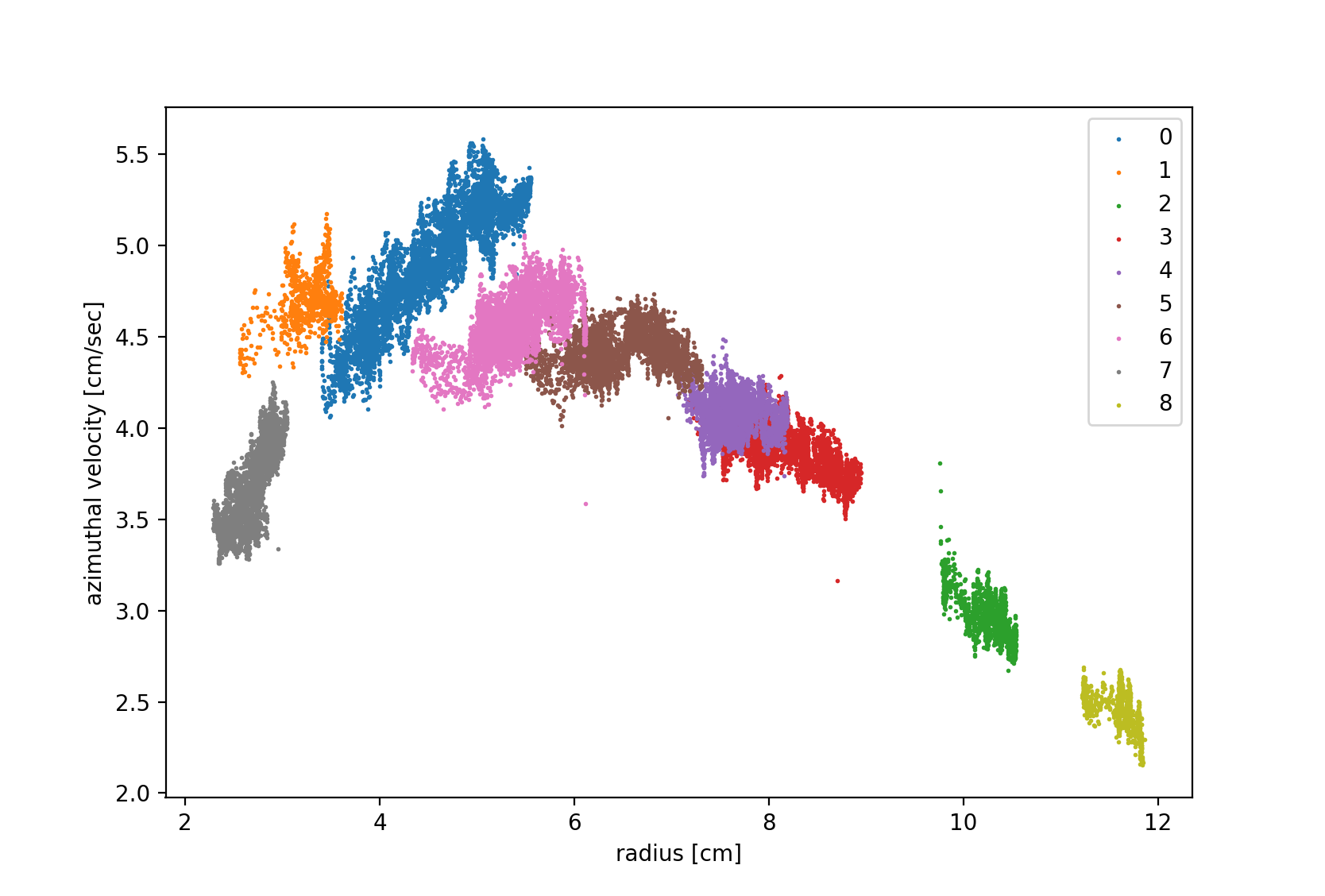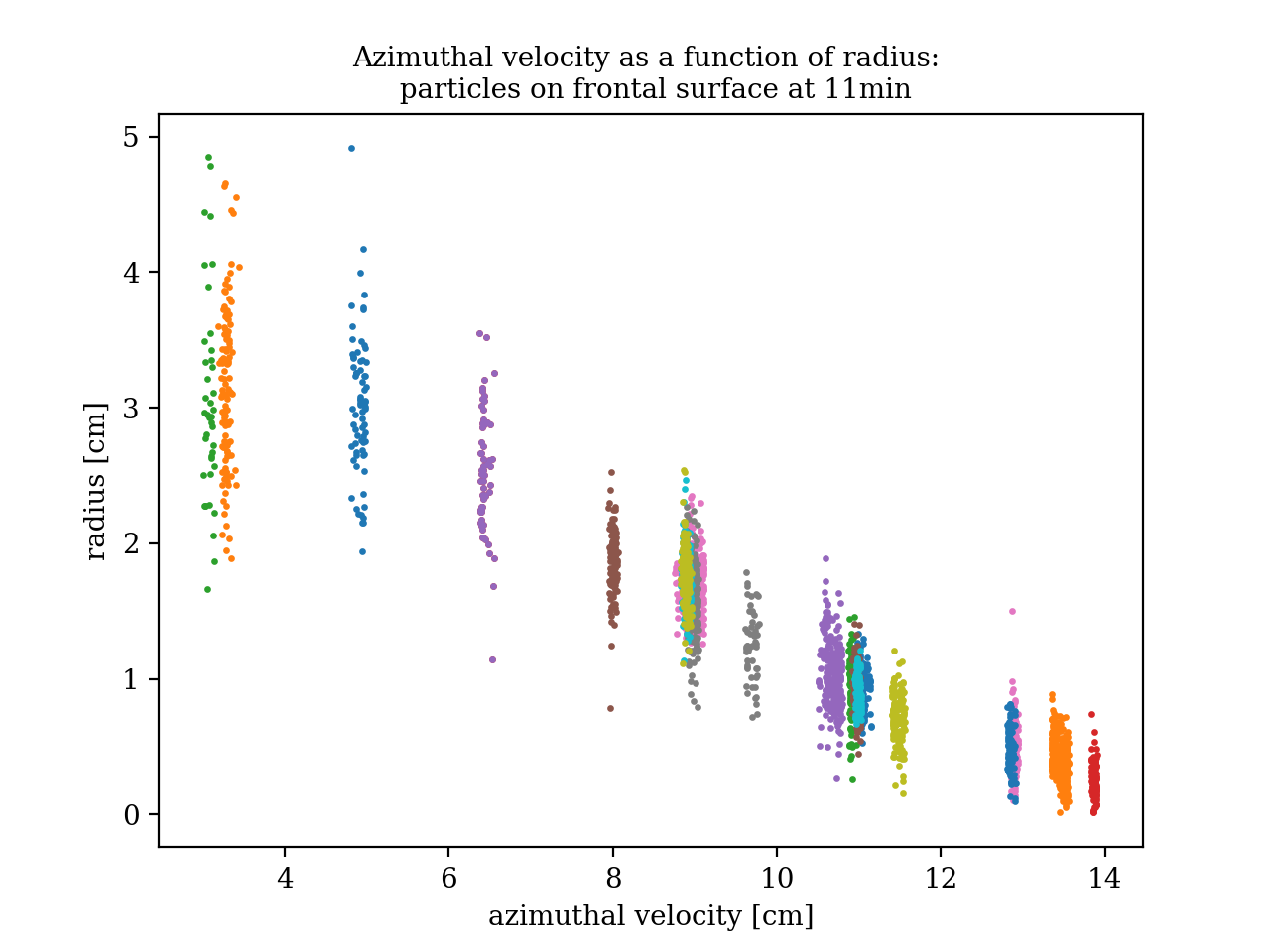By: Bea Nash and Bethany Cates
1 Introduction
For our Dig Deeper Project, we wanted to build on our work from Project 3, where we examined the general flow dynamics created by the interaction of fluids of different air masses. In Project 3, we modeled the Hadley circulation as a two-layer system, but we didn't really think about how the boundary affected the fluid flow. Of course, fronts are really important for weather systems - most everyday weather phenomena occur at frontal boundaries. In this experiment, we investigated the frontal boundary more closely.
(TODO insert images of fronts in the wild)
2 Tank Procedure
3 Background theory: Thermal Wind and Margules relation
4 Lab results
In order to collect data from our experiment, we tracked using video processing software buoyant particles at the surface of the fluid, as well as particles with density in between that of the two fluids which sat just above the frontal boundary. The shape of the front, although relatively stable, did vary slightly throughout the course of the experiment, as can be seen from the following images.
Figure 1: The progression of the front. The time stamp shown is relative to the time at which the can was removed, allowing the two fluids to meet.
Initially, the shape of the front resembles a Gaussian, with a wide sloping surface and flat top. As the experiment progresses, the front boundary gradually sinks relative to the free surface. Its sides flatten and the width of the center peak narrows.
Using equation x, we calculate the radius of deformation to be around 20 centimeters, or half of the width of the tank. Given that the boundary of the front extends all the way to the outside of the tank, close to, but not at, the bottom of the tank, the actual radius of deformation for this front is slightly larger than this prediction. Because of this, we see the slope of the front decrease towards the edge of the tank, as the front has no more room to spread outwards.
Using the tracked particles, we now analyze the velocity of the fluid both on the surface and at the frontal boundary starting around 11 minutes after the removal of the can. As can be seen from the above images, the fluid appears sufficiently stable at this point in the experiment to assume hydrostatic balance. At this time, we track particles at the surface, resulting in the following set of tracks:
.
The axes are labeled in pixels, and the dot at the center indicates the center of the front. Each of the different colors correspond to an individual tracked particle.
From the two above plots, one can see that the fluid does behave cyclonically at the surface, as we expected. At large radii, where the frontal boundary has a very small slope, the azimuthal velocity is small, as would be expected from the Margules relation. As the radius decreases, the slope increases and so does the azimuthal velocity of the fluid, reaching its peak at around 5 centimeters. At very small radii, the azimuthal velocity decreases again as the frontal boundary flattens.
We also track the particles which sit just above the frontal surface. These are the blue spheres seen in Figure 1.
These particles are more different to track, hence the tracks are shorter, and the concentration of dye and particles at the center of the front made it impossible to track the particles for very small radii.
